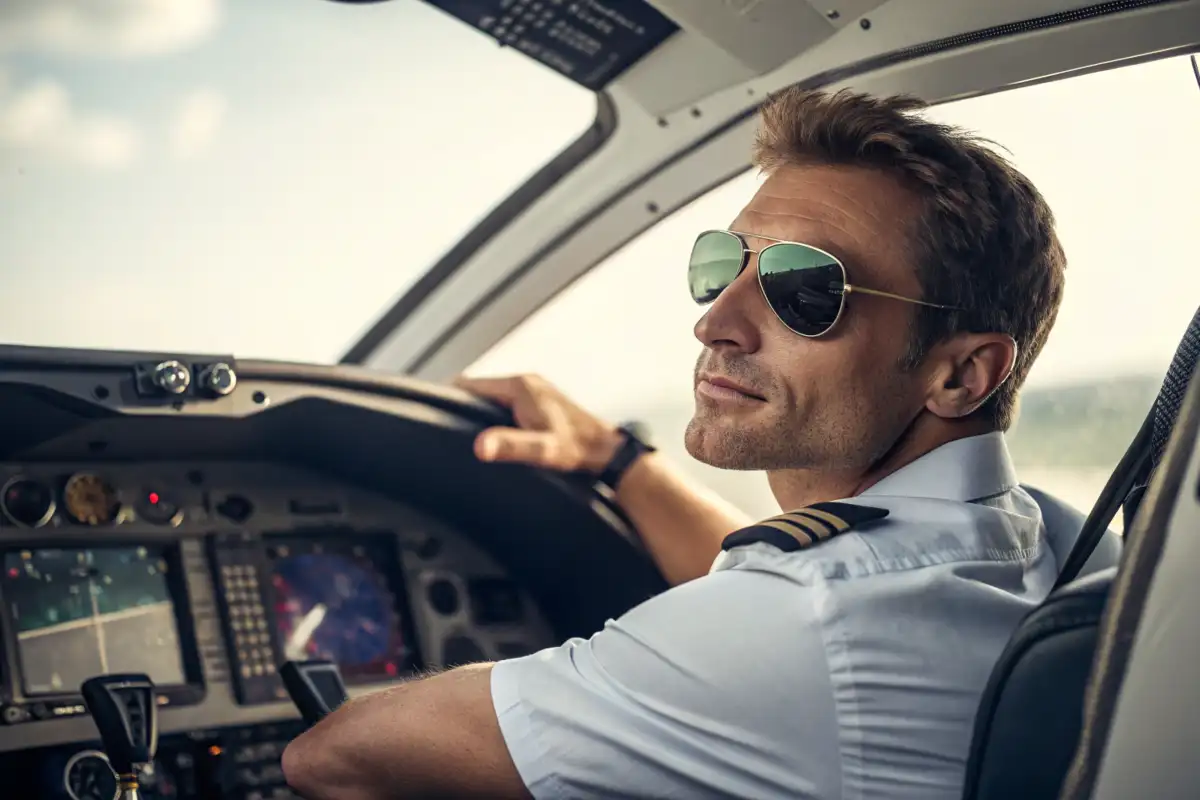The Birth of an Icon: How the Aviator Sunglass Revolutionized Eyewear
The story of the aviator sunglasses begins in the cockpits of military aircraft during the 1930s. Initially designed by Bausch & Lomb for U.S. military pilots, these distinctive frames were engineered to provide maximum protection from the sun’s glare at high altitudes. The teardrop-shaped lenses, approximately 5-6 times larger than the eye socket, offered unprecedented coverage while maintaining a sleek profile. What started as functional military equipment quickly transcended its utilitarian origins, becoming a symbol of courage, adventure, and effortless style.
Evolution Through Decades: Tracing Modern Aviator Sunglasses Trends
The transformation of aviator sunglasses from military gear to fashion statement parallels significant cultural shifts in American society. In the post-war era, returning pilots brought their trusted eyewear into civilian life, inadvertently launching a style revolution. The 1960s saw celebrities like Peter Fonda sporting aviators in “Easy Rider,” cementing their connection to rebellion and freedom. By the 1980s, Tom Cruise’s appearance in “Top Gun” triggered a massive resurgence, demonstrating the style’s remarkable ability to reinvent itself for new generations.
The Science Behind the Shape: Engineering Excellence in Aviator Frames
The engineering principles behind aviator sunglasses remain as relevant today as they were at inception. The characteristic teardrop shape isn’t merely aesthetic—it’s designed to follow the cheek’s natural contour while maximizing peripheral vision coverage. Modern iterations maintain these core principles while incorporating advanced materials like lightweight titanium alloys and polarized lenses, proving that form and function coexist beautifully in eyewear designs.
Cultural Impact: When Fashion Meets Function in Aviator Eyewear
Few fashion accessories have achieved the cultural resonance of aviator sunglasses. Their adoption by diverse groups—from military personnel to Hollywood stars, politicians to rock musicians—speaks to their extraordinary versatility. This adaptability has enabled them to maintain relevance across decades, transcending traditional fashion cycles to become a genuine cultural touchstone.
Market Analysis: Understanding the Enduring Appeal of Classic Aviators

The global sunglasses market tells a compelling story about aviators’ lasting influence. Recent market research indicates that aviator-style frames consistently rank among the top three bestselling sunglasses styles worldwide. This persistence in popularity defies typical fashion trends, suggesting that aviators have achieved the rare status of being both classically timeless and contemporarily relevant.
Style Guide: Selecting the Perfect Aviator Frame for Your Face
Finding the ideal aviator frame involves understanding facial geometry and personal style preferences. While the classic teardrop shape suits most face types, subtle frame size, bridge width, and lens tint variations can dramatically impact comfort and aesthetics. The key is balancing proportions—more prominent faces generally accommodate traditional aviator sizes, while smaller faces might benefit from scaled-down versions that maintain the iconic shape.
Future Trends: Innovation and Sustainability in Modern Eyewear Designs
The future of aviator sunglasses lies at the intersection of heritage and innovation. Contemporary manufacturers are exploring sustainable materials, innovative technology integration, and customization options while preserving the classic silhouette that made aviators famous. This evolution ensures that aviators will continue to resonate with environmentally conscious consumers without sacrificing their iconic appeal.
conclusion
The enduring popularity of aviator sunglasses represents a remarkable testament to exceptional eyewear designs principles in fashion history. From their military origins to their current status as a global style icon, aviators have consistently demonstrated an unparalleled ability to adapt while maintaining their distinctive character. Their perfect balance of form and function, combined with cultural significance and versatility, ensures their position as a permanent fixture in eyewear fashion. As sustainable materials and innovative technology emerge, aviators evolve, proving that genuinely timeless design can bridge past, present, and future fashion landscapes.
A PDF document from the FAA with information about “Sunglasses for pilots.”





